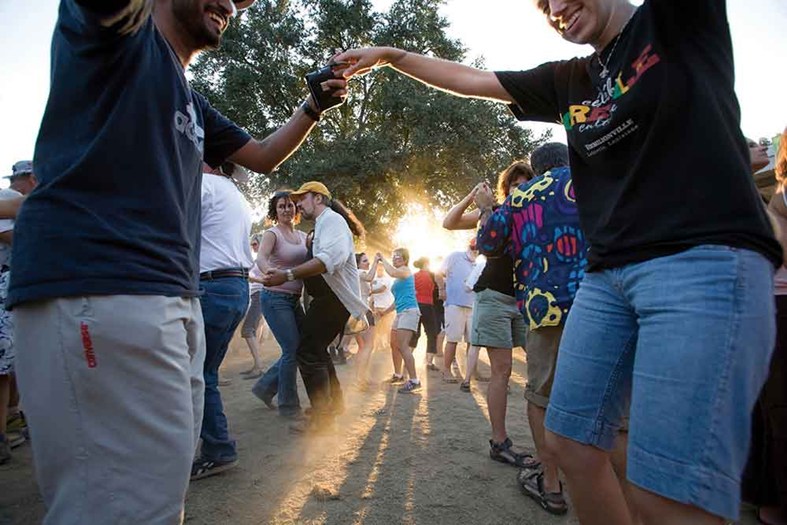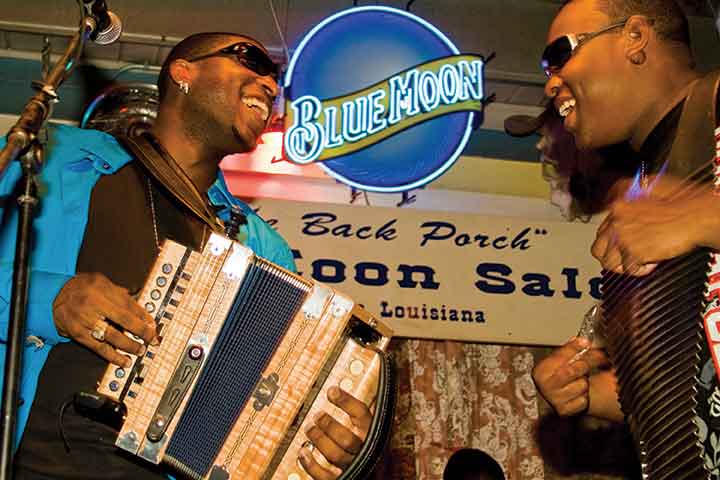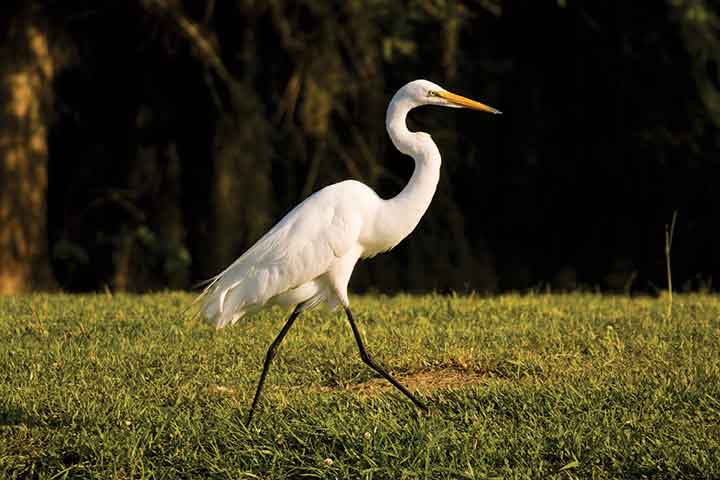LAFAYETTE, LA - There’s music and then there’s Zydeco. Deep in Cajun Country, when the clock strikes 9, the Café des Amis is jumping. When J.J. Caillier and the Zydeco Knockouts launch into another number, chairs scrape the floor, people rise and start dancing, spellbound by this blend of accordion, electric guitars, drums, and the singular percussion instrument called a vest frottoir (metal apron).
Zydeco — no one agrees on what the name means exactly, except that it’s French Cajun and compelling — speaks directly to the body, bypassing the brain entirely. And that’s why this place is always packed by 9 on a Saturday — and that’s 9 in the morning, y’all.
Rumour has it that celebrated Blues Brother and Ottawa native Dan Ackroyd likes to drop by this popular spot when he’s in the neighbourhood (we’re a 90-minute drive northwest of New Orleans) during Mardi Gras season. If so, it’s hard to fathom where he’d find a place to sit. Lineups begin at 7:30 a.m., music starts at 8, and the café, a former casket factory, fills up fast.
We experienced many delightful shocks in Cajun Country. Breakfasting to zydeco tunes in Breaux Bridge among a jeans and cowboy-booted crowd — a third of them from Europe — sipping café au lait and devouring warm beignets. Well, that was just one beignet.
The towns in the Heart of Acadiana may be small — Breaux Bridge, the Crawfish Capital of the World, has a population of just over 8,000; metropolitan centres like Lafayette number less than half a million — but people’s hearts are large. When I told someone in Lafayette I was from Canada, the stranger hugged me like a long-lost relative: “Ma cousine!”

Above: The music is lively and the dancing is pure Cajun in this part of America.
The music travels north to cities like Montreal, Moncton and Winnipeg; Zydeco and Cajun music lights up festivals wherever French speakers planted their roots.
The 700,000 Acadians living in Southern Louisiana today remain the largest French-speaking minority in the U.S., many, if not most, descended from l’Acadie, the colony founded in Nova Scotia in 1604. When those settlers were brutally expelled by the British in 1755, few made the return trip to France. Most sailed south, searching for new homes.
Les acadiennes, quickly Americanized into Cajuns, packed little but their language, music, religion and joie de vivre when they settled in the remote reaches of bayou country. As it happened, that was more than enough.
The definition of Cajun today is somewhat elastic (experts have counted as many as 17 varieties) but most know some French and all proudly celebrate their heritage and centuries-old refusal to assimilate.
Visitors step into local history at The Vermilionville Living History Museum & Folklife Park, a Cajun/Creole heritage site created in 1990. Old houses — some date from the early 1800s, others are replicas — line winding paths through what appears to be a living Acadian village on Lafayette’s Bayou Vermilion.
Craftspeople in period costume happily show off their skills and their gardens, passing the time of day chatting with curious visitors. One volunteer blacksmith regaled us with tales of his ancestors, bayou folk who kept to themselves, fishing, trapping and maintaining their traditions. Eco tours and swamp adventures open windows into the moody, haunted waters that evoke the bayou experience.

Above: Blue Moon is where Blues make your night.
Cajun cuisine continues to evolve, although the old dishes are revered, and gator (alligator) makes frequent appearances on the menu. (After one lavish buffet in Lafayette, I explained I’d only tried the chicken, only to be told no chicken had been served. “That was gator.”)
Besides traditional menu offerings at standout eateries like Randol’s Seafood in Lafayette, there are boudin (sausage) tastings and local craft beers (Bayou Teche Brewing’s Acadie). We ate lunch at a café called French Press in downtown Lafayette, as chic as anything north of the Mason-Dixon Line. And our dinner at Julie’s Louisiana Bistro was a thoroughly elegant experience.
Hot sauce belongs on every Louisiana table, none being more famous than Tabasco, created by the McIlhenny family on Avery Island, 20 minutes south of Lafayette. An Avery Island visit reveals the painstaking methods behind making red Tabasco (the shop sells green and yellow Tabasco as well as kitchen-themed items).
In the 1890s, “Mr. Ned” McIlhenny, concerned with the decimation of the great white egret population (hunted for their decorative feathers), established a bird sanctuary on Avery Island’s Bayou Petite Anse. Now a jungle sanctuary and botanical paradise, Avery Island is home to deer, alligators and, naturally, the great white egret.
In Southern Louisiana, America’s multicultural face is everywhere; its population shares French, African, Creole, Caribbean and Native American roots. Dance floor conversations run along these lines:
“Are you Cajun?”
“I’m from Canada.”
“That’s Cajun!”
What really draws people together — Europeans, Canadians and British alike — is the music, both the guitar, fiddle and accordion Cajun tunes and the electric, washboard, accordion Zydeco sound. Country and classical music are also hugely popular.
Artisans like Anya Burgess handcrafts fiddles at Sola Violins in downtown Lafayette when she’s not performing with the Grammy-nominated duo Bonsoir, Catin. Three out of five nominees in the American Regional Roots category at this year’s Grammys were Cajun or Zydeco bands. The winner was country/cajun accordionist Jo-El Sonnier, a native of the town of Rayne, Acadia Parish.

Above: The area is renowned for its unique bird species.
Within a few days of our Lafayette visit, folks started looking familiar. The same faces we saw at the Blue Moon Saloon, doing a practiced two-step to the sounds of Dikki Du and the Zydeco Krewe (just back from a European tour), appeared the next night on the large dance floor at Randol’s Seafood, alongside flamboyantly dressed members of local “krewes,” or Mardi Gras clubs, trying out their new costumes for the upcoming blow-out: feathered, sparkling, outrageous, weird — yet homey.
Music brought us here and music will bring us back. It’s easy enough to understand. In the words of the lady we met Saturday morning on the dance floor in Breaux Bridge: “Music makes your heart smile.”